Crataegus oxyacantha
Crataegus oxyacantha
Plant profile:
| Family | Rosaceae |
| Hindi name | Bansangli |
| English name | European Hawthorn, Thornapple |
| Trade name | Hawthorn |
| Parts used | Fruit, leaf, and flowers |
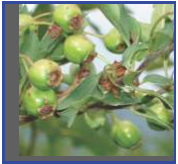
Plant of Crataegus oxyacantha
Morphological Characteristics
- It is deciduous small tree growing up to nine m in ht. Branches are grayish and spine scent.
- Leaves are 3.0-3.5 cm long, broadly ovate or rhombic, cuneate at base, deeply and sharply cut to two-thirds their width, coarsely-toothed, pubescent or glabrescent beneath.
- Petioles are almost equal to blade.
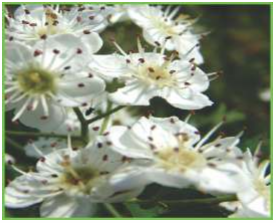
Flowers of Crataegus oxyacantha
Floral Characteristics
- Flowers are 5.0-5.7 mm long, white, terminal corymbose cymes. Calyx is woolly-hairy at base having 5-lobbed.
- Lobes are sub-acute.
- Petals are 5 in number and orbicular.
- Stamens are many.
- Carpels are adnate to the calyx tube, tips pubescent.
- Styles are 1 or 2 in number, slender and globose.
- Fruits are glabrous, scarlet red and fleshy.
Distribution
- It is a temperate shrub or a small tree of forests, scrubs, foothills, wastelands etc. of north-west Himalaya from Indus to Ravi, at an altitude of 2000-3000 m MSL.
Climate and Soil
- It prefers sandy clay-loam soil and subhumid, temperate climate. It can grow well in low rainfall areas.
Propagation Material
- Planting material is seed. It has two years dormancy.
- Seed germination is difficult and time consuming.
- Therefore vegetative propagation by stem cutting is preferred for raising saplings of C.oxyacantha.
- Further, vegetatively propagated plants produce better growth than that of raised from seeds.
Agro-technique
Nursery Technique
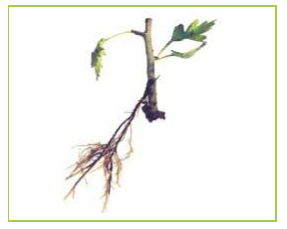
Rooted stem cutting of Crataegus oxyacantha
Raising Propagules:
- Appropriate time to collect its seeds is September, when the fruits are just ripe on tree.
- Rate of success in raising plants from seed by deploying different scarification and stratification treatments is not satisfactory (less than 20%).
- Hence, vegetative propagation is more effective.
- Stem-cuttings of 2-8 mm diameter are raised in nursery during May should be planted at 10cm X 10cm spacing.
- Soil mixed with equal quantity of sand is more suitable for raising its nursery.
- Stem cutting be given treatment with Indole Butyric Acid (IBA) at 4000 ppm for promoting callus.
- Shoot cutting derived from the plant acclamatise in vicinity, so that the success in rooting is around 60%.
- Normally, the stem-cuttings take 7090 days for rooting.
- The rooted stem cuttings should be hardened at least for 2 months before transplanting in field.
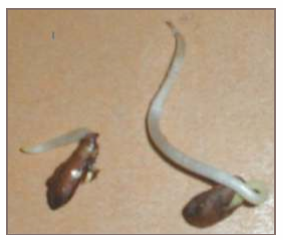
Sprouting kernels of Crataegus oxyacantha
Propagule Rate and Pre-treatment:
- 2,500 saplings/ha are required for plantation.
Planting in the Field
Land Preparation and Manure Application:
- Primary tillage of entire field is not necessary for this crop.
- Only planting spots marked at desired spacing should be cleaned and pits of 45cm X 45cm X45cm dimension should be dug out at a distance of 2m X 2m in the field, which is filled with equal proportion of soil and sand.
- July-August is the suitable period for planting of rooted stem-cuttings in field.
- The saplings should be planted at the centre of pits and the soil should be gently compressed after planting.
- The transplants should be given light irrigation after the planting.
- Farm Yard Manure (FYM) @ 15 t/ha should be applied as basal dose at the time of transplanting in field.
- In subsequent years, FYM should be applied @ 22.5 t/ha at the time of bud-break, after winter dormancy i.e. March-April.
Transplanting and Optimum Spacing:
- Rooted stem-cuttings, after proper hardening in nursery, can be directly planted in main field.
- Plant spacing of 2m x 2m is optimum in terms of vertical growth of the tree and yield of fruit.
Irrigation Practices:
- Irrigation at weekly interval is essential for about a month, during dry period after transplanting.
Weed Control:
- Two hand-weeding at monthly interval during July to September provides effective weed control in the initial 2-3 years of the plantation.
Disease and Pest Control:
- Disease or insect-pest has not been observed in this crop.
Harvest Management
Crop Maturity and Harvesting:
- C. oxyacantha comes to bearing after 5-6 years from planting in the field.
- Flowering and fruiting occur during April-May and fruits ripen during July - August. Fruits are harvested when it is fully ripe.
Post-harvest Management:
- Fruits should be dried under shade and stored at room temperature in a dry place.
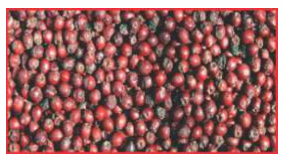
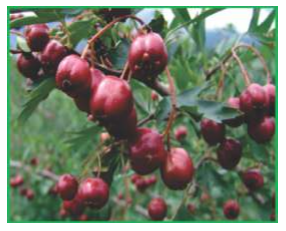
Ripe fruits of Crataegus and Mature fruit of Crataegus oxyacantha
Chemical Constituents:
- Plant contains total flavonoid content in leaf, flower, fruit, pulp and bark range from 0.48 to 1.65% and total phenolic content vary from 3.31 to 5.46%.
- The flavonoid content is maximum in leaf while phenolic content is maximum in bark.
- The antioxidant potential (percent inhibition of DPPH free radical by 1 mg/ml of plant material) was maximum in bark (81.5%) followed by flower, leaf, pulp and fruit (14%). It also contains saponins, glycosides, flavonoids, ascorbic acid, condensed tannins and amines.
- The therapeutic properties of C.oxyacantha are attributed to the flavonoids, triterpenic acids and biogenic amines in it.
- Its flower yields positive inotropic amines viz., phenethylamine, o-methoxyphenethyl amine and tyramine.
- Active principles also include pocyanidins and alkylamines.
Yield:
- Production of fresh fruits after nine years after planting is about 600 kg/ha.
Therapeutic Uses
- Traditionally, fruit is used as home remedy for arteriosclerosis, hypertension, and sore throat in folk medicine.
- It is considered useful in congestive heart failure, coronary circulation problems, angina, and arrhythmias. It is used to increase cardiac output reduced by pulmonary disease and to treat hypo- and hyper-tension, atherosclerosis, hyperlipidemia, and Buerger's disease.
- It is also used as a sedative, anxiolytic, antispasmodic, astringent, and diuretic.
- Hawthorn preparations are used as a wash for sores, itching, and frost-bite.
- Fresh fruit is effective in treatment of cardiac disorders of nervine origin.
- Extract of C. oxyacantha shoot possesses strong negative chronotropic, positive inotropic and coronary dilatory effects. Leaf is used to treat hypertension.
- C. oxyacantha also possesses antioxidant properties.
- Phenolic extract of its flower has antioxidative properties.
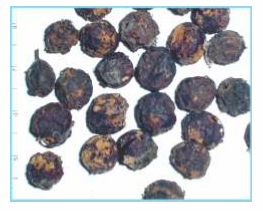
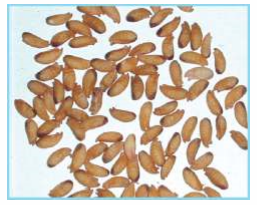
Seeds of Crataegus oxyacantha and Kernels of Crataegus oxyacantha
Source :Agro-techniques of Selected Medicinal Plants
Last Modified : 7/1/2024
This topic provides information about cultivation ...
This content provides information about cultivatio...
This content provides information on cultivation o...
This content provides information about cultivatio...
